For 35 years, the Final Fantasy franchise has captivated fans with its anthology style of storytelling, keeping things fresh with new characters and stories. It even has a tendency to set the time periods somewhere between past and future in each game while keeping them connected with the same plot: a group of young heroes gathering to fight a great evil threatening their world while they exploring their internal struggles and relationships with each other — a universal theme that people can relate to.
If you’re new and want to get into the Final Fantasy series, there are 15 numbered games (with Final Fantasy XVI on the way), a few direct sequels, and a prequel to the first game. It sounds like a lot, but we’re here to help you make the journey into the RPG franchise a little smoother.
Jump to:
Looking at the Final Fantasy franchise as a whole can be overwhelming as most of them have hundreds of hours of content to play through. If you want to ease yourself into the franchise, we recommend starting with Final Fantasy VII. This game left an indelible mark on the game industry for having the easiest gameplay and combat systems to get a hang of, especially with the Limit Break system, and giving us the most memorable characters, like Cloud, Tifa, Aerith, Barret, and Sephiroth. Its popularity inspired Square to create Kingdom Hearts in collaboration with Disney so that some of its characters could interact with Disney characters.
Final Fantasy VII even came out with a feature-length CGI and Final Fantasy VII Remake, which has prettier graphics but retains the same story with themes of pro-environmentalism, identity, and moving on from loss — elements that previous Final Fantasy stories did not have. Either version of the game is fine to pick up and play.
If you want to do a deep dive into the Final Fantasy franchise and play all of them in chronological order, here’s the full list of games and the order in which to play them. Though you can play most of the mainline numbered in any random order and still be fine as there is no direct continuity between them.
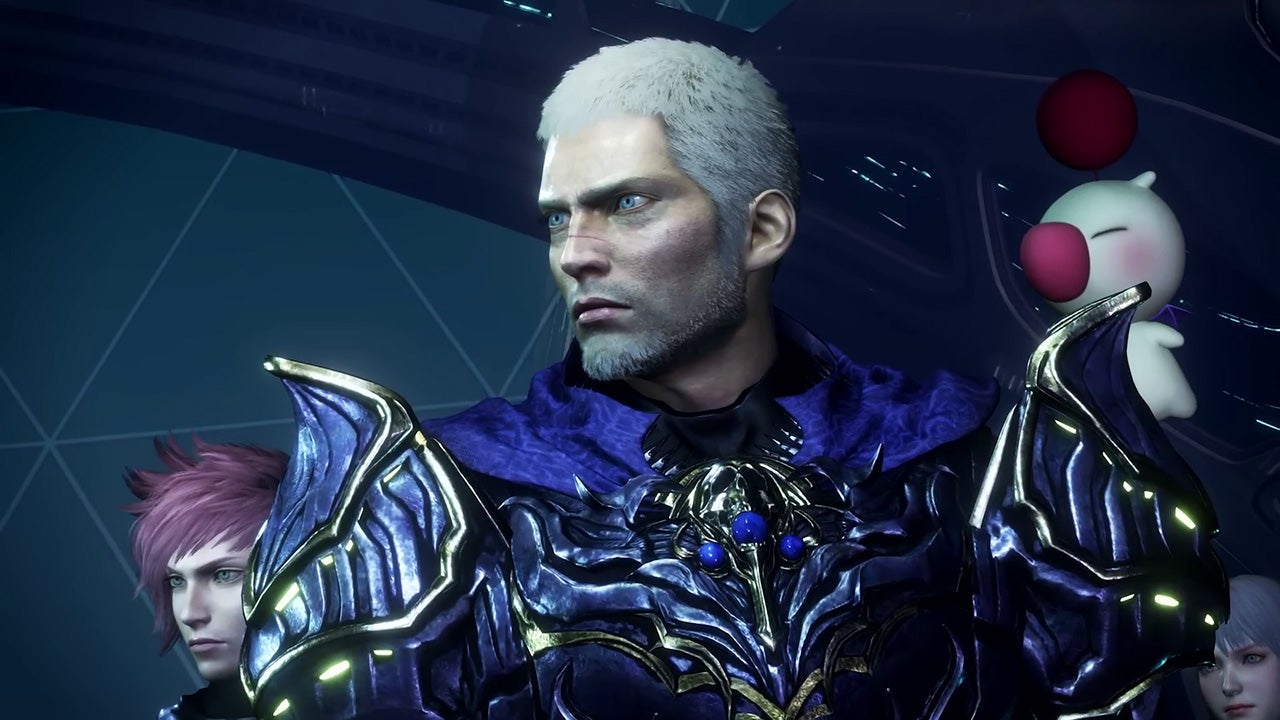
Stranger of Paradise: Final Fantasy Origin takes place in the kingdom of Cornelia, a dark fantasy world version of the setting of the original Final Fantasy game. Jack Garland and his companions and fellow Warriors of Light, Ash, Jed, Neon and Sophia — each carrying a darkened crystal representing earth, wind, fire and water — set out to find Chaos and destroy him, restoring light to the world. Despite what the prophecy foretold about the heroes, each Warrior grows skeptical about their role.
You can change characters’ jobs on the fly, but with Jack as the player character you can only switch between two positions. No matter his job title, Jack has a decisive finishing move that crystallizes enemies and shatters them to restore a portion of his magic meter once the enemy's break gauge is depleted.
Read our review of Strangers of Paradise: Final Fantasy Origin.
Centuries after the events of Stranger of Paradise, Final Fantasy introduces four new young Warriors of Light, each of them carrying an orb representing the four elements that have been darkened by the four Elemental Fiends. At first, they’re tasked by the King of Cornelia to rescue Princess Sarah from the evil knight Garland, but their journey expands to defeating the fiends and restoring the orbs to their former glory, thus saving the world from eternal darkness.
Final Fantasy gets its name from series creator Hironobu Sakaguchi’s threat to leave the games industry and go back to university if it didn’t sell well, and Square Enix dealing with the notion of the game being its very last due to the threat of bankruptcy. Ultimately, the game sold over 1.3 million copies worldwide and grossed over $21 million, saving both the company and Sakaguchi’s career.
Read our review of Final Fantasy.
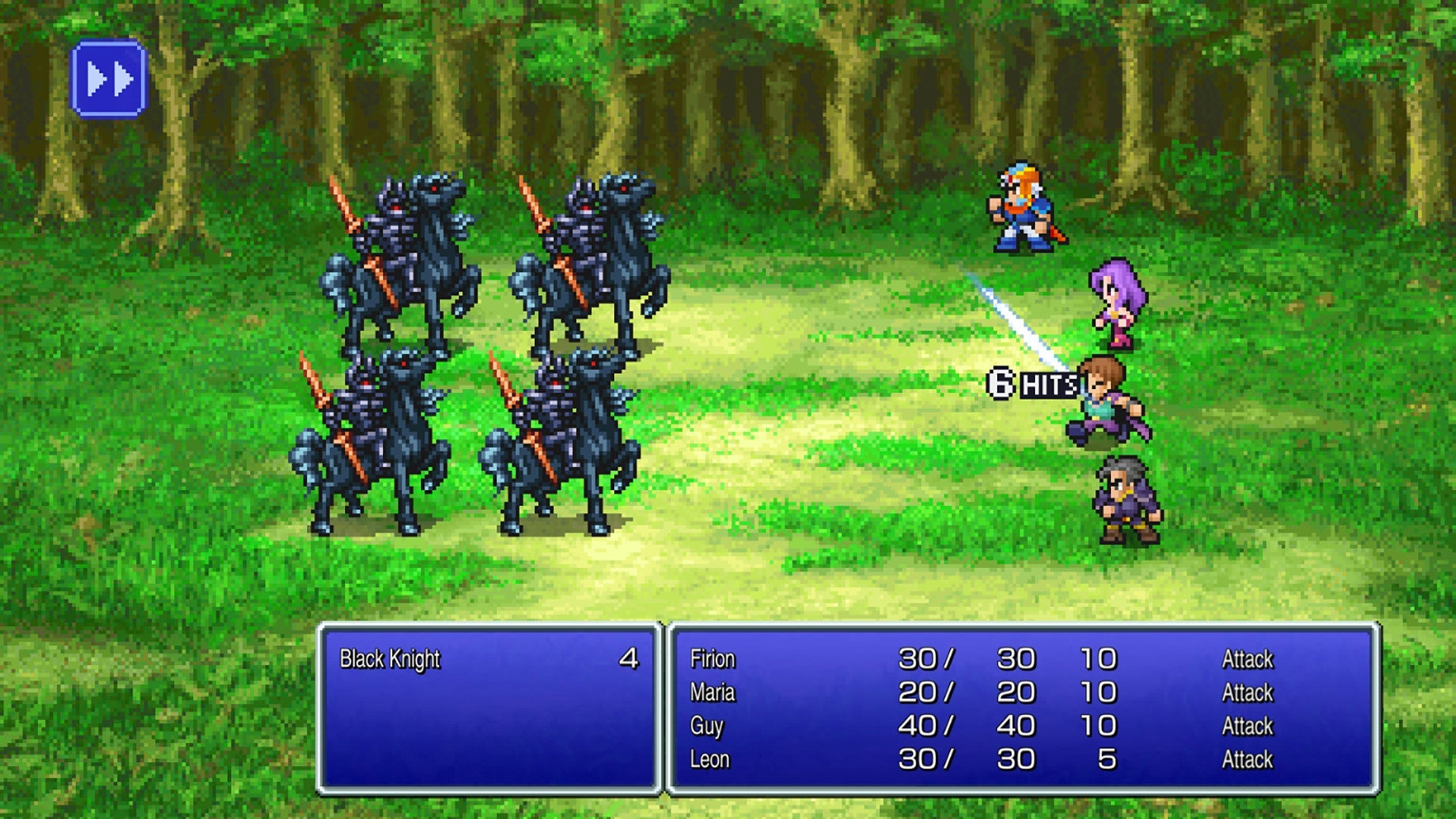
In Final Fantasy II, Firion, Guy, Maria, and Leon become orphans after the Palamecian Empire destroys their hometown and kills their parents, rendering them orphans. They join the Wild Rose Rebellion and, under the guidance of Princess Hilda, who initially deemed them too young to join the army, journey to stop Emperor Mateus’ plans to take over the world with his hellspawn.
Unlike the first Final Fantasy, the sequel had no character creation or job system because Square wanted the game to be more story-driven rather than filled with heavy gameplay mechanics. This game is notable for introducing a couple of staples that would forever define the series: chocobos and the recurring inventor character Cid.
Read our review of Final Fantasy II.
Another group of four orphaned teens — Arc, Refia, Luneth, and Ingus — are drawn to a crystal of light in the Altar Cave after an earthquake hits the village of Ur. The crystals grants the youth a portion of its power, their first set of jobs, and instructs them to restore balance to the world.
Final Fantasy III is the first numbered game in the series to feature the job-change system, allowing players to change how the characters would battle monsters throughout the game. Instead of staying in one job or class, they could explore other job options and see which one suits each character. The 2006 Nintendo DS remake retained the elements of the original game, but gave the characters more well-rounded personalities.
Read our review of Final Fantasy III.
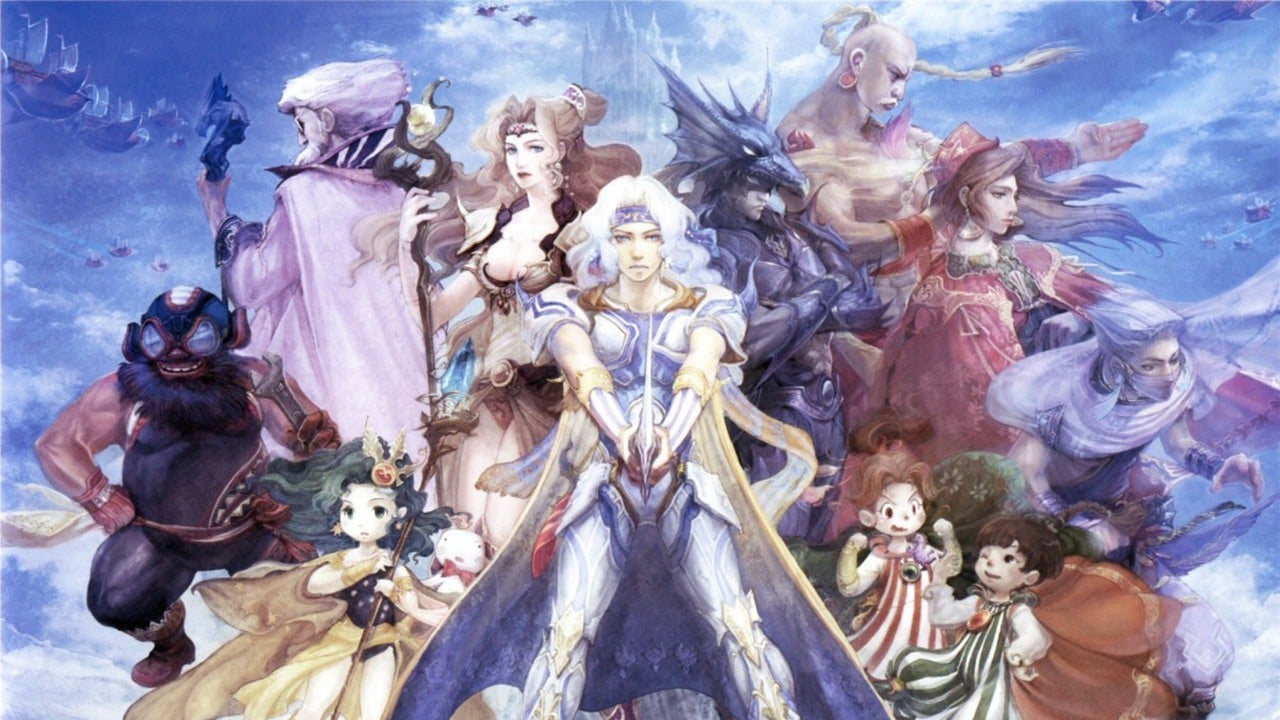
Final Fantasy IV centers on Red Wings captain Cecil Harvey, who questions the King of Baron’s motives after he and his knights steal the Water Crystal in a raid on Mysidia. After the king strips him of his title as punishment for disloyalty, Cecil sets out on a quest with Kain Highwind and the allies they meet along the way to stop the sorcerer Golbez from seizing the other crystals in order to save the world.
This game introduced the Active Time Battle (ATB) system, which allows characters to perform a move when their gauge is full. Whereas a party is limited to four people in the previous games, Final Fantasy IV allowed a party of five characters.
Read our review of Final Fantasy IV.
Adventurer Bartz Klauser comes across a fallen meteor and finds four strangers, including King Tycoon’s daughter Lenna, and set off on an adventure to save the Crystals from falling apart, a phenomenon caused by Exdeath, an entity trying to free himself from imprisonment and gain the power of the Void. The group becomes Warriors of Light and focuses their attention on defeating Exdeath and stopping the Void’s energies from plunging their world into darkness.
Final Fantasy V expanded on the job system, giving players more than 21 jobs to choose from. To make the job system even more interesting, you can combine a skill you learn from a certain job with a different skill from another job in order to defeat challenging dungeons and bosses.
Read our review of Final Fantasy V.
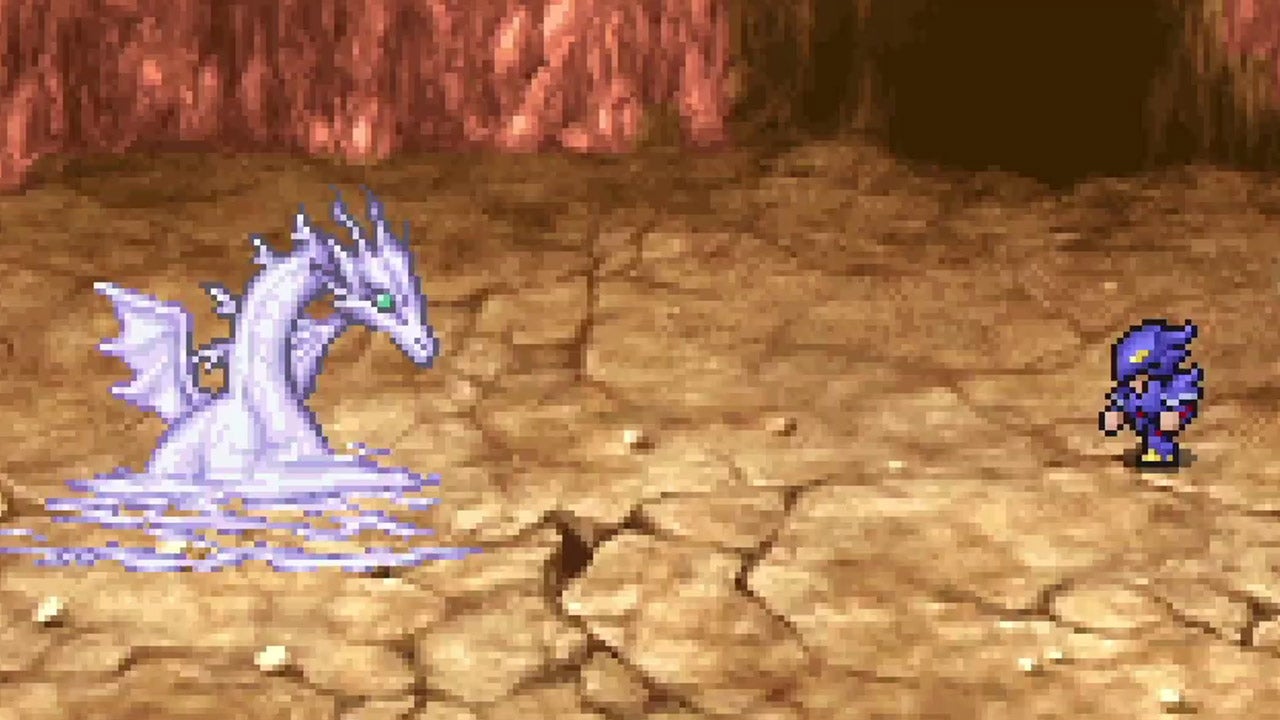
Set in a steampunk-style world filled with technology resembling that of the Second Industrial Revolution, Final Fantasy VI centers on a rebel faction known as the Returners fighting the Gesthalian Empire, which gained the power to take over the world by experimenting on magical creatures known as Espers. The Returners, including amnesiac former imperial soldier Terra Branford, work to free the regions under Gesthalian control using the magic they seek out and put a stop to the empire’s reign.
Final Fantasy VI, which was released as Final Fantasy III in North America and heavily censored due to Nintendo of America’s policies at the time, has 14 playable characters to choose from throughout the story, making it the largest cast in the series’ history. It also deals with mature themes of immoral military dictatorship, use of chemical weapons in warfare, the pursuit of a magical arms race, personal redemption, and the renewal of hope and life. This is also the first Final Fantasy game to not be directed by Sakaguchi, who handed the reins over to Yoshinori Kitase.
Read our review of Final Fantasy VI.
Set in Midgar seven years before the events of Final Fantasy VII, Crisis Core: Final Fantasy VII centers on fresh-faced SOLDIER Zack Fair, who is assigned to look for missing SOLDIER and defector Genesis Rhapsodos, who went off on a rampage for reasons unknown. During his search, he discovers Genesis’ origin, Project G (or the Jenova project) and how it’s connected to the two aforementioned high-ranking SOLDIERs, and eventually battles him and other products of the project, which involves injecting Jenova DNA into them.
Crisis Core: Final Fantasy VII was notable for exploring the sensitive side of Sephiroth, the most successful SOLDIER beloved by everyone before he went insane after discovering the unnatural circumstances of his creation and quickly fell from grace, as well as some of Cloud Strife’s life as a SOLDIER before leaving Shinra Electric Power Company. It was originally a PSP-exclusive title, but managed to get remastered as Crisis Core: Final Fantasy VII Reunion for PS5, PS4, Xbox Series X/S, Xbox One, and Nintendo Switch in honor of the 25th anniversary of Final Fantasy VII.
Read our review of Crisis Core: Final Fantasy VII.
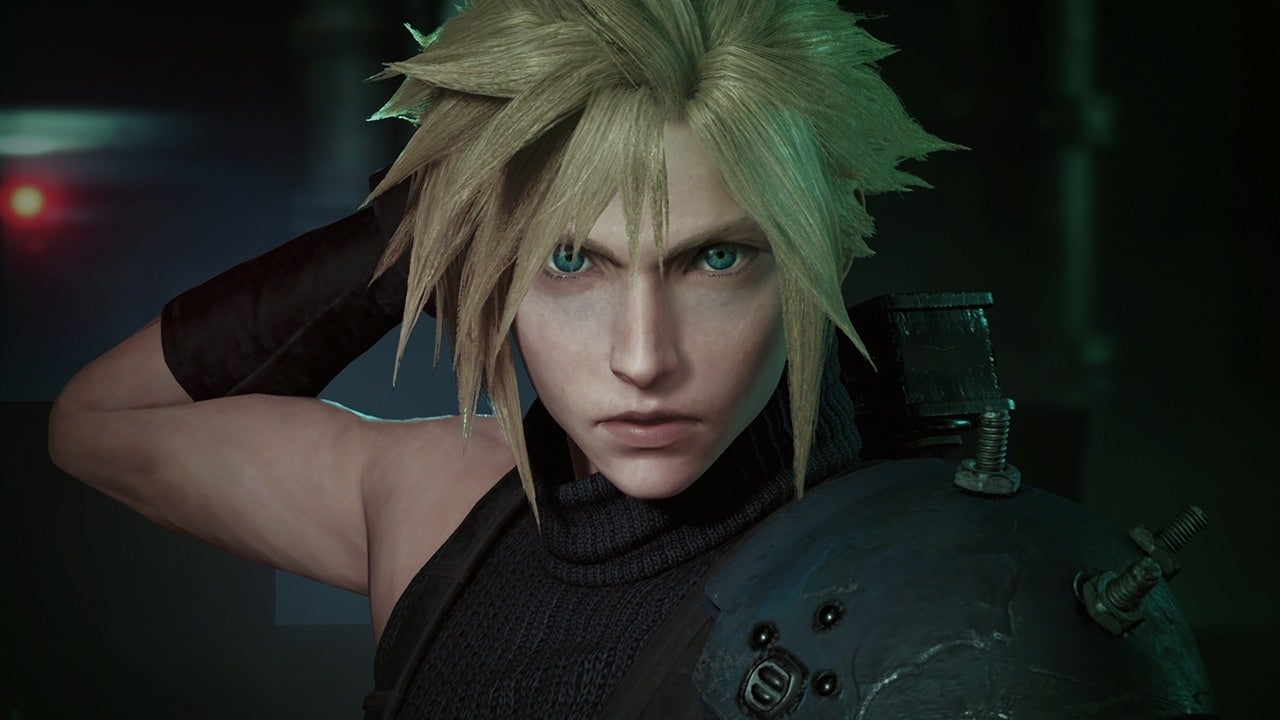
In one of the most iconic games of the series, ex-SOLDIER turned mercenary Cloud Strife joins Avalance (led by Barett Wallace) in the fight to stop Shinra from lining the company’s pockets by mining all the mako from the planet to use as an energy source. Cloud initially fought for personal gain and to keep a promise he made to Tifa Lockhart when they were kids, but eventually developed friendships with other members of Avalanche, including Aerith Gainsborough, and works with them to save Midgar from both Shinra and Sephiroth, who was hellbent on destroying the planet in order to be reborn as a demigod.
With the retention of ATB and the introduction of Materia, Final Fantasy VII grew so popular that most of its characters appeared in the Kingdom Hearts series and spawned the CGI sequel film, Final Fantasy VII: Advent Children. It also spawned the full-blown remaster, Final Fantasy VII Remake, which will be released in three parts. The first part was released in 2020, while Final Fantasy VII Rebirth is set to come out in Winter 2023.
Read our review of Final Fantasy VII.
In this contentious follow-up to Final Fantasy VII, a group of young SeeD mercenaries led by Squall Leonhart (or Leon, as he’s known in the Kingdom Hearts series) help out a group known as the Forest Owls, an endeavor that escalates into a conflict by Sorceress Edea, who has seized control of a powerful military state and intend to destroy time itself. As they fight to stop Edea, Squall struggles with his role and falls in love with Forest Owls leader Rinoa Heartilly.
Final Fantasy VIII still incorporates ATB as part of its gameplay, but it overhauled the character leveling system. As far as spell-casting goes, the game threw out the Magic Points-based system, making characters collect, draw, and create magic from items to power themselves up using the junction system instead. This is also the first game to incorporate a vocal theme into its soundtrack with “Eyes On Me” by Hong Kong pop star Faye Wong.
Read our review of Final Fantasy VII.
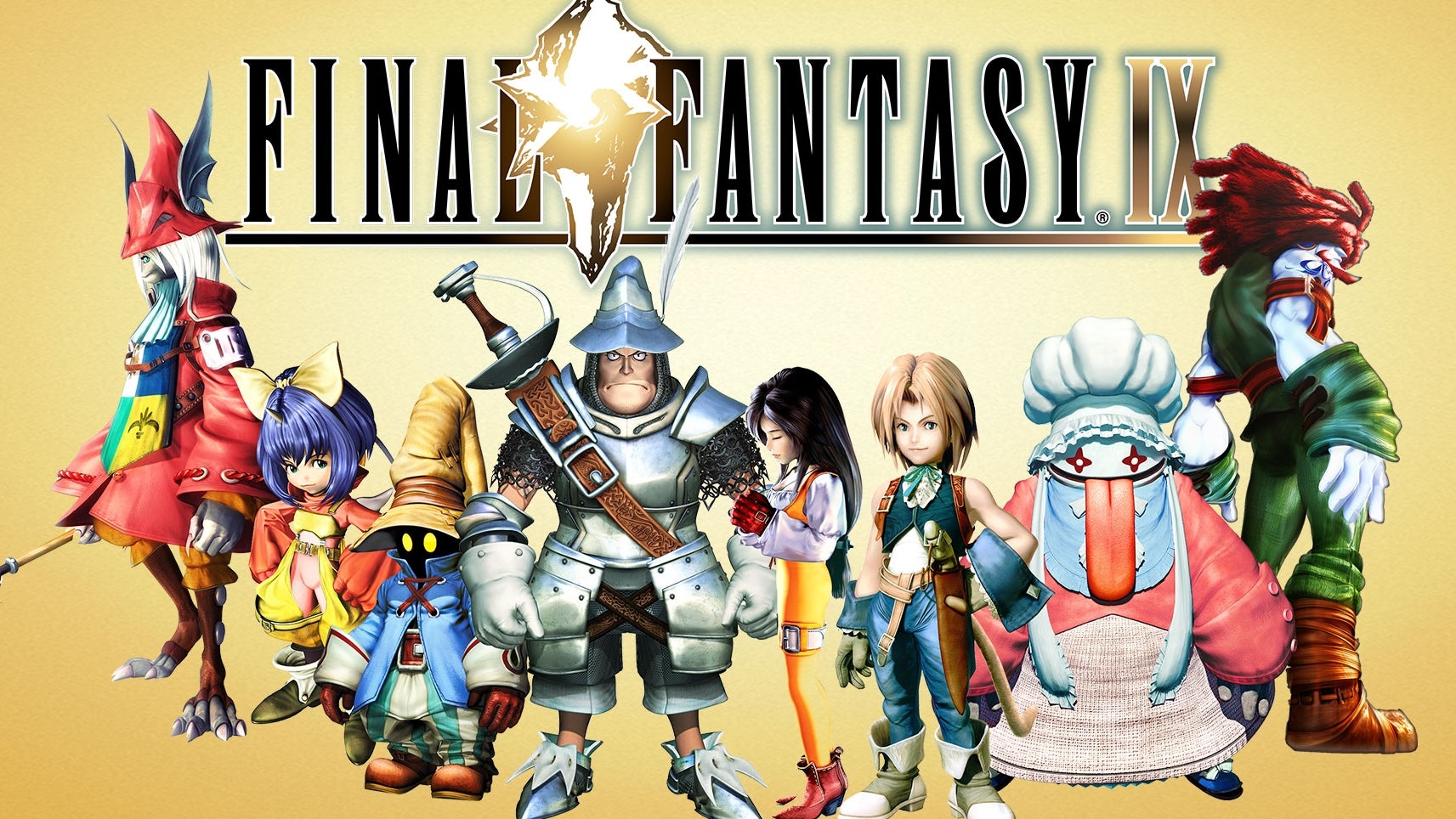
In the first Final Fantasy game of the millennium, a thief named Zidane Tribal is tasked with kidnapping the Princess of Alexandria, Garnet Til Alexandros XVII, as a part of a war wage against the neighboring nation of Lindblum. His thief troupe ends up becoming the princess’ guardians, and Zidane teams up with Garnet to defeat her mother, Queen Brahne, who started the war.
Despite Final Fantasy IX being released in 2000, when most game franchises transitioned from 2D to 3D graphics by then, Square Enix designed the game to look like a retro-style RPG. However, it still managed to render CGI graphics for the characters and everything else in the world of Gaia.
Read our review of Final Fantasy IX.
Final Fantasy X is one of the most beloved games in the series next to Final Fantasy VII — and we’re not just saying that because it’s the first Final Fantasy game for the PS2. The story revolves around star blitzball player named Tidus, who is taken to Spira — a world inspired by the South Pacific, Thailand, and Japan — by Auron after his hometown of Zanarkand is destroyed by a colossal monster named Sin. He joins summoner Yuna and her guardians on a quest to defeat Sin and bring about the Calm after learning its true identity is Tidus’ missing father Jecht.
This game replaced ATB with the Conditional Turned-Based Battle system that uses an Act List in which characters’ turns are determined by their stats. It also introduced a new leveling system called the Sphere Grid, which sets characters down a specific path with stats and abilities and allows them to unlock all their abilities once it opens up.
Read our review of Final Fantasy X.
In the follow-up to Final Fantasy X, Yuna becomes a sphere hunter and a member of the Gullwings, comprising Rikku and Paine. She sets out to find Tidus — or at least, a mysterious man who looks like Tidus — but gets caught in a political conflict that the Gullwings must resolve before it escalates to a war involving a secret weapon that was built to destroy Spira.
In addition to being the first game in the series to be an official game sequel, Final Fantasy X is also the first to feature an all-female cast and have multiple possible endings. It brought back ATB, but enhanced it to allow characters to interrupt enemies while preparing to attack. It also introduced dresspheres and the Garment Grid, which allow characters to change their character class mid-battle to alter the course of the battle.
Square Enix took a page out of World of Warcraft and made Final Fantasy XI an MMORPG instead of a regular console game. Players could customize their characters and make it into one of many races of being roaming the land of Vana’diel — Humes, Elvaan, Tarutaru, Mithra, Galka, etc. The plot revolves around defeating a demonic leader called the Shadow Lord, who rose from the ashes of the Crystal War and sent his beastmen armies off to terrorize the land, albeit in a less organized fashion.
Support for the PS2 and Xbox 360 versions of Final Fantasy XI ended in 2016, but fans can still play it on PC. Rumors circulated last year that the game would shut down, given that it’s over 20 years old, but director Yuji Fujito stated that that was not the case. In other words, it’s still alive and well and beloved by many retro Final Fantasy fans.
Read our review of Final Fantasy XI.
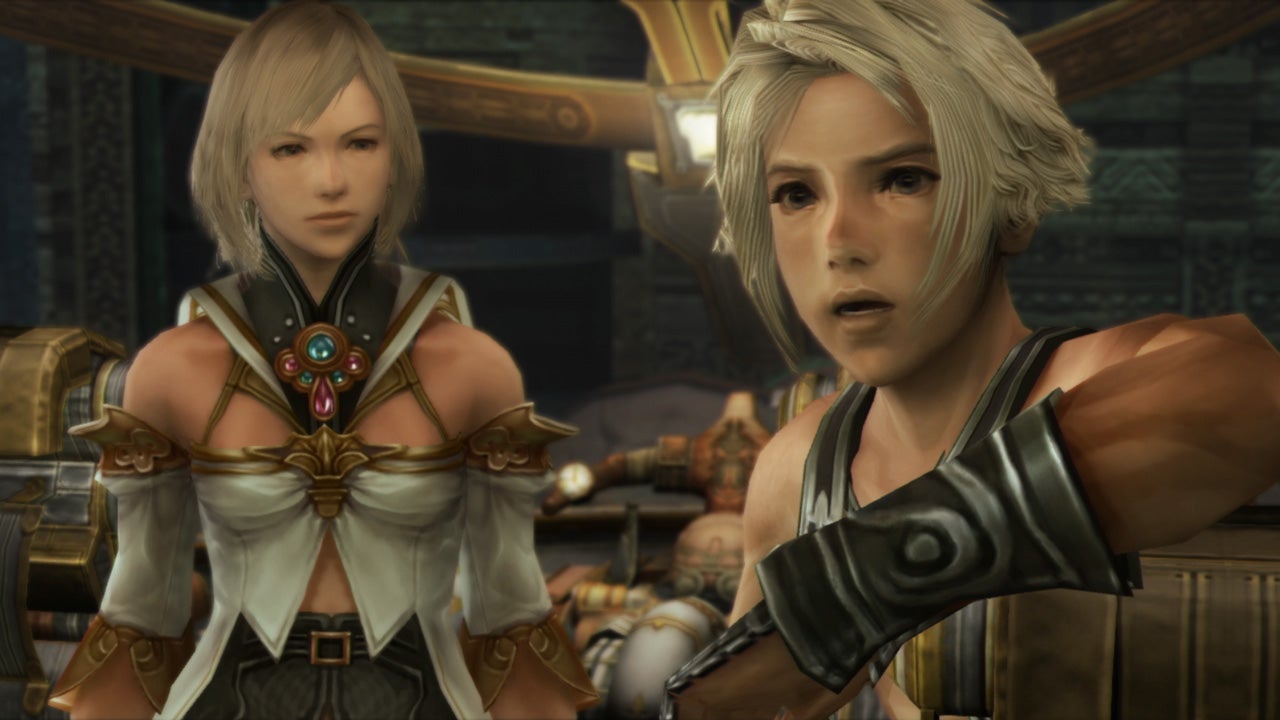
Final Fantasy XII is set in the kingdom of Ivalice, where the Archadia and Rozarria empires are fighting an endless war with each other. When Dalmasca is annexed by the former nation, Princess Ashe forms a resistance movement and meets Vaan, who dreams of becoming a sky pirate, teaming up with him to rally against the tyranny of the Archadian Empire.
Final Fantasy XII took three years for Square Enix to develop after Final Fantasy X-2 was released, and it paid off. It won several Game of the Year awards and spawned the Nintendo DS sequel, Final Fantasy XII: Revenant Wings, in 2007. Over a decade later, the remastered version of the game, Final Fantasy XII: The Zodiac Age, released on PS4, Xbox One, Nintendo Switch, and Windows.
Read our review of Final Fantasy XII.
Lightning, the series’s first female protagonist aside from Yuna in Final Fantasy X-2, is a former soldier living in the floating world of Cocoon whose sister Serah goes missing after she’s branded an enemy of Cocoon by the government, Sanctum, for coming in contact with a god-like creature from Pulse. As Lightning searches for her sister, she’s joined by a band of allies to rally against Sanctum for authorizing a purge on citizens who also came into contact with Pulse, leaving the fate of the world at risk.
This game wasn’t received well not because it had a female lead, but rather because it had confusing battle systems — Command Synergy Battle and Paradigm Shift — and linear maps. Even so, it was well-received and spawned two more direct sequels.
Read our review of Final Fantasy XIII.
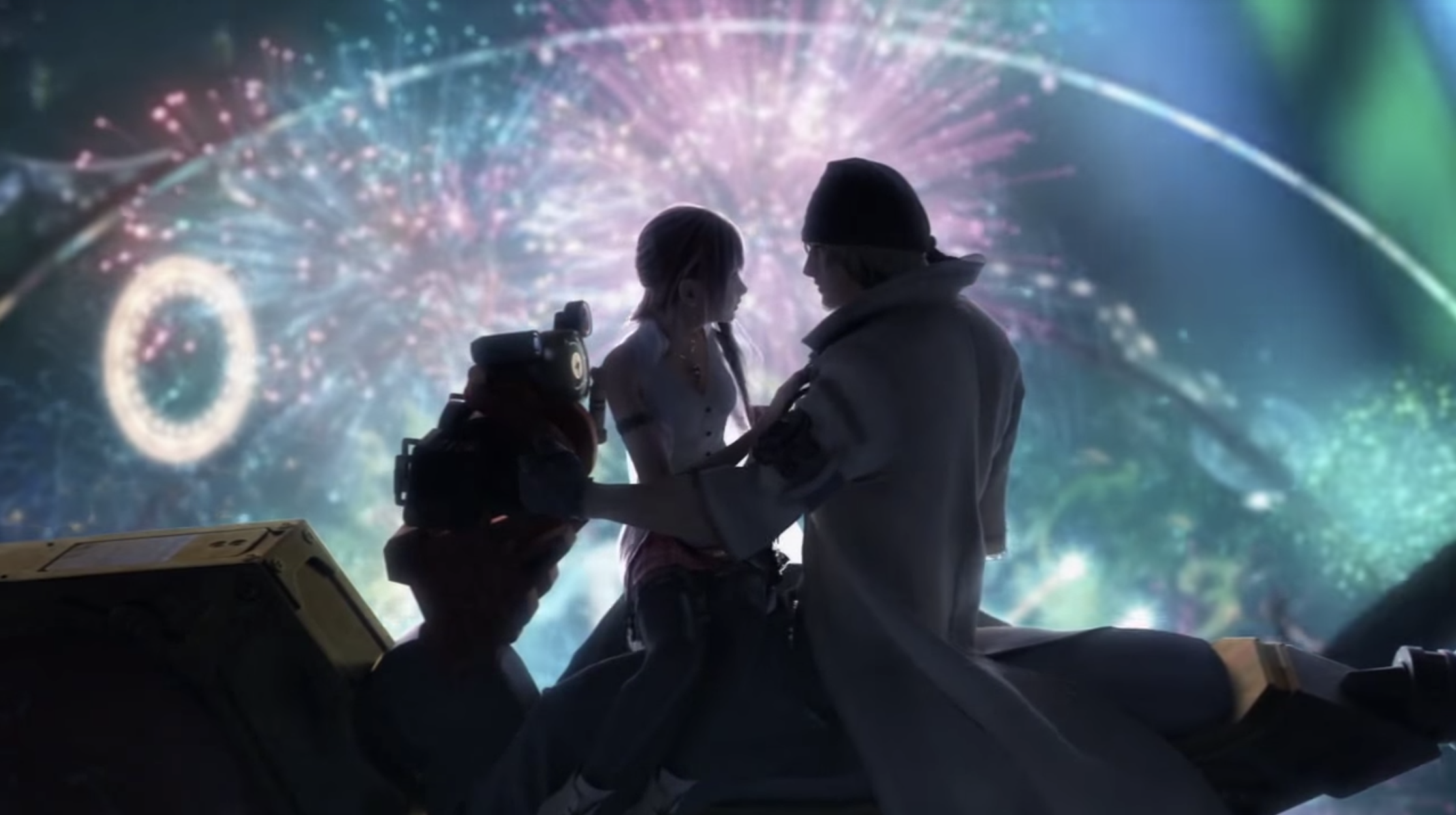
Three years after the events of Final Fantasy XIII, Serah takes the lead and teams up with Noel Kreiss, a young man from the distant future, to travel across time and space to find Lightning. Meanwhile, Lightning finds herself in Valhalla, a realm between death and chaos at the edge of time in the distant future, ruled by the goddess Etro, who she protects as a knight during a war with Caius.
Final Fantasy XIII-2 retained the Command Synergy Battle and Paradigm Shift systems, but they were improved upon to make battles flow better. Mog Clock was added to the mix, which prompts players to attack monsters on the field before time runs out to gain the upper hand in battle.
Read our review of Final Fantasy XIII-2.
In the last installment of the Final Fantasy XIII trilogy, Lightning awakens from her 500-year hibernation to discover that the world is about to end in 13 days. She is chosen by the god Bhunivelze to save everyone, but along the way she learns the truth about the world’s fate and Bhunivelze’s real motives.
Players slammed this game because it featured a ticking clock that signifies how long you had until the game was over, putting a strict time limit on missions and side quests. Its saving grace was the heavily modified version of the Command Synergy Battle system, which employed real-time features, like freely taking control of Lightning’s movements and attacks.
Read our review of Lightning Returns: Final Fantasy XIII.
Final Fantasy XIV has several storylines, but the main one involves the player character traveling five years into the future to escape the destruction of Eorzea at the hands of the primal dragon Bahamut. They enter Eorzea in the Age of Calm and work to rebuild the land, but must deal with the threat of invasion by the Garlean Empire.
The circumstances surrounding Final Fantasy XIV’s development were pretty complicated — especially since it’s the second MMORPG title in the series. The original 2010 game was embroiled in controversy because it was released in an unfinished state, although its servers remained active until November 2012. The next year, Square Enix released Final Fantasy XIV: A Realm Reborn with favorable acclaim and went on to produce four expansions: Heavensward, Stormblood, Shadowbringers, and Endwalker.
Read our review of Final Fantasy XIV.
The latest installment revolves around Noctis, a prince from the kingdom of Lucis is set to marry his childhood friend Lunafreya when he goes on a quest to rescue the Crystal from Niflheim, who stole it during an attack on the Lucian capital of Insomnia, killing his father in the process, on the eve of peace negotiations between the two empires. During his journey, he learns of his destiny to use the Crystal’s powers to save the realm of Eos from eternal darkness.
Final Fantasy XV received critical acclaim for its stunning visuals, gameplay — like driving around the world in the Regalia and the Active Cross Battle system — and its visceral soundtrack, including a rendition of “Stand By Me” by Florence + The Machine used as the game’s theme song as well as a few contributions from Afrojack. The game spawned a few spin-off games, the anime series called Brotherhood: Final Fantasy XV, and a feature film Kingsglaive: Final Fantasy XV.
Read our review of Final Fantasy XV.
If you want to play the Final Fantasy games in the order in which they came out, here’s the list of games by release date. Keep in mind that most titles were released in Japan first, followed by the U.S. at a later date. The first six games are remastered for the Nintendo Switch in Final Fantasy Pixel Remaster.
Looking for more video game timelines? Check out these guides:
Continue reading...
If you’re new and want to get into the Final Fantasy series, there are 15 numbered games (with Final Fantasy XVI on the way), a few direct sequels, and a prequel to the first game. It sounds like a lot, but we’re here to help you make the journey into the RPG franchise a little smoother.
Jump to:
Which Final Fantasy Game Should You Play First?
Looking at the Final Fantasy franchise as a whole can be overwhelming as most of them have hundreds of hours of content to play through. If you want to ease yourself into the franchise, we recommend starting with Final Fantasy VII. This game left an indelible mark on the game industry for having the easiest gameplay and combat systems to get a hang of, especially with the Limit Break system, and giving us the most memorable characters, like Cloud, Tifa, Aerith, Barret, and Sephiroth. Its popularity inspired Square to create Kingdom Hearts in collaboration with Disney so that some of its characters could interact with Disney characters.
Final Fantasy VII even came out with a feature-length CGI and Final Fantasy VII Remake, which has prettier graphics but retains the same story with themes of pro-environmentalism, identity, and moving on from loss — elements that previous Final Fantasy stories did not have. Either version of the game is fine to pick up and play.
How to Play Final Fantasy Games in Chronological Order
If you want to do a deep dive into the Final Fantasy franchise and play all of them in chronological order, here’s the full list of games and the order in which to play them. Though you can play most of the mainline numbered in any random order and still be fine as there is no direct continuity between them.
Stranger of Paradise: Final Fantasy Origin

Stranger of Paradise: Final Fantasy Origin takes place in the kingdom of Cornelia, a dark fantasy world version of the setting of the original Final Fantasy game. Jack Garland and his companions and fellow Warriors of Light, Ash, Jed, Neon and Sophia — each carrying a darkened crystal representing earth, wind, fire and water — set out to find Chaos and destroy him, restoring light to the world. Despite what the prophecy foretold about the heroes, each Warrior grows skeptical about their role.
You can change characters’ jobs on the fly, but with Jack as the player character you can only switch between two positions. No matter his job title, Jack has a decisive finishing move that crystallizes enemies and shatters them to restore a portion of his magic meter once the enemy's break gauge is depleted.
Read our review of Strangers of Paradise: Final Fantasy Origin.
Final Fantasy
Centuries after the events of Stranger of Paradise, Final Fantasy introduces four new young Warriors of Light, each of them carrying an orb representing the four elements that have been darkened by the four Elemental Fiends. At first, they’re tasked by the King of Cornelia to rescue Princess Sarah from the evil knight Garland, but their journey expands to defeating the fiends and restoring the orbs to their former glory, thus saving the world from eternal darkness.
Final Fantasy gets its name from series creator Hironobu Sakaguchi’s threat to leave the games industry and go back to university if it didn’t sell well, and Square Enix dealing with the notion of the game being its very last due to the threat of bankruptcy. Ultimately, the game sold over 1.3 million copies worldwide and grossed over $21 million, saving both the company and Sakaguchi’s career.
Read our review of Final Fantasy.
Final Fantasy II

In Final Fantasy II, Firion, Guy, Maria, and Leon become orphans after the Palamecian Empire destroys their hometown and kills their parents, rendering them orphans. They join the Wild Rose Rebellion and, under the guidance of Princess Hilda, who initially deemed them too young to join the army, journey to stop Emperor Mateus’ plans to take over the world with his hellspawn.
Unlike the first Final Fantasy, the sequel had no character creation or job system because Square wanted the game to be more story-driven rather than filled with heavy gameplay mechanics. This game is notable for introducing a couple of staples that would forever define the series: chocobos and the recurring inventor character Cid.
Read our review of Final Fantasy II.
Final Fantasy III
Another group of four orphaned teens — Arc, Refia, Luneth, and Ingus — are drawn to a crystal of light in the Altar Cave after an earthquake hits the village of Ur. The crystals grants the youth a portion of its power, their first set of jobs, and instructs them to restore balance to the world.
Final Fantasy III is the first numbered game in the series to feature the job-change system, allowing players to change how the characters would battle monsters throughout the game. Instead of staying in one job or class, they could explore other job options and see which one suits each character. The 2006 Nintendo DS remake retained the elements of the original game, but gave the characters more well-rounded personalities.
Read our review of Final Fantasy III.
Final Fantasy IV

Final Fantasy IV centers on Red Wings captain Cecil Harvey, who questions the King of Baron’s motives after he and his knights steal the Water Crystal in a raid on Mysidia. After the king strips him of his title as punishment for disloyalty, Cecil sets out on a quest with Kain Highwind and the allies they meet along the way to stop the sorcerer Golbez from seizing the other crystals in order to save the world.
This game introduced the Active Time Battle (ATB) system, which allows characters to perform a move when their gauge is full. Whereas a party is limited to four people in the previous games, Final Fantasy IV allowed a party of five characters.
Read our review of Final Fantasy IV.
Final Fantasy V
Adventurer Bartz Klauser comes across a fallen meteor and finds four strangers, including King Tycoon’s daughter Lenna, and set off on an adventure to save the Crystals from falling apart, a phenomenon caused by Exdeath, an entity trying to free himself from imprisonment and gain the power of the Void. The group becomes Warriors of Light and focuses their attention on defeating Exdeath and stopping the Void’s energies from plunging their world into darkness.
Final Fantasy V expanded on the job system, giving players more than 21 jobs to choose from. To make the job system even more interesting, you can combine a skill you learn from a certain job with a different skill from another job in order to defeat challenging dungeons and bosses.
Read our review of Final Fantasy V.
Final Fantasy VI
Set in a steampunk-style world filled with technology resembling that of the Second Industrial Revolution, Final Fantasy VI centers on a rebel faction known as the Returners fighting the Gesthalian Empire, which gained the power to take over the world by experimenting on magical creatures known as Espers. The Returners, including amnesiac former imperial soldier Terra Branford, work to free the regions under Gesthalian control using the magic they seek out and put a stop to the empire’s reign.
Final Fantasy VI, which was released as Final Fantasy III in North America and heavily censored due to Nintendo of America’s policies at the time, has 14 playable characters to choose from throughout the story, making it the largest cast in the series’ history. It also deals with mature themes of immoral military dictatorship, use of chemical weapons in warfare, the pursuit of a magical arms race, personal redemption, and the renewal of hope and life. This is also the first Final Fantasy game to not be directed by Sakaguchi, who handed the reins over to Yoshinori Kitase.
Read our review of Final Fantasy VI.
Crisis Core: Final Fantasy VII
Set in Midgar seven years before the events of Final Fantasy VII, Crisis Core: Final Fantasy VII centers on fresh-faced SOLDIER Zack Fair, who is assigned to look for missing SOLDIER and defector Genesis Rhapsodos, who went off on a rampage for reasons unknown. During his search, he discovers Genesis’ origin, Project G (or the Jenova project) and how it’s connected to the two aforementioned high-ranking SOLDIERs, and eventually battles him and other products of the project, which involves injecting Jenova DNA into them.
Crisis Core: Final Fantasy VII was notable for exploring the sensitive side of Sephiroth, the most successful SOLDIER beloved by everyone before he went insane after discovering the unnatural circumstances of his creation and quickly fell from grace, as well as some of Cloud Strife’s life as a SOLDIER before leaving Shinra Electric Power Company. It was originally a PSP-exclusive title, but managed to get remastered as Crisis Core: Final Fantasy VII Reunion for PS5, PS4, Xbox Series X/S, Xbox One, and Nintendo Switch in honor of the 25th anniversary of Final Fantasy VII.
Read our review of Crisis Core: Final Fantasy VII.
Final Fantasy VII

In one of the most iconic games of the series, ex-SOLDIER turned mercenary Cloud Strife joins Avalance (led by Barett Wallace) in the fight to stop Shinra from lining the company’s pockets by mining all the mako from the planet to use as an energy source. Cloud initially fought for personal gain and to keep a promise he made to Tifa Lockhart when they were kids, but eventually developed friendships with other members of Avalanche, including Aerith Gainsborough, and works with them to save Midgar from both Shinra and Sephiroth, who was hellbent on destroying the planet in order to be reborn as a demigod.
With the retention of ATB and the introduction of Materia, Final Fantasy VII grew so popular that most of its characters appeared in the Kingdom Hearts series and spawned the CGI sequel film, Final Fantasy VII: Advent Children. It also spawned the full-blown remaster, Final Fantasy VII Remake, which will be released in three parts. The first part was released in 2020, while Final Fantasy VII Rebirth is set to come out in Winter 2023.
Read our review of Final Fantasy VII.
Final Fantasy VIII
In this contentious follow-up to Final Fantasy VII, a group of young SeeD mercenaries led by Squall Leonhart (or Leon, as he’s known in the Kingdom Hearts series) help out a group known as the Forest Owls, an endeavor that escalates into a conflict by Sorceress Edea, who has seized control of a powerful military state and intend to destroy time itself. As they fight to stop Edea, Squall struggles with his role and falls in love with Forest Owls leader Rinoa Heartilly.
Final Fantasy VIII still incorporates ATB as part of its gameplay, but it overhauled the character leveling system. As far as spell-casting goes, the game threw out the Magic Points-based system, making characters collect, draw, and create magic from items to power themselves up using the junction system instead. This is also the first game to incorporate a vocal theme into its soundtrack with “Eyes On Me” by Hong Kong pop star Faye Wong.
Read our review of Final Fantasy VII.
Final Fantasy IX

In the first Final Fantasy game of the millennium, a thief named Zidane Tribal is tasked with kidnapping the Princess of Alexandria, Garnet Til Alexandros XVII, as a part of a war wage against the neighboring nation of Lindblum. His thief troupe ends up becoming the princess’ guardians, and Zidane teams up with Garnet to defeat her mother, Queen Brahne, who started the war.
Despite Final Fantasy IX being released in 2000, when most game franchises transitioned from 2D to 3D graphics by then, Square Enix designed the game to look like a retro-style RPG. However, it still managed to render CGI graphics for the characters and everything else in the world of Gaia.
Read our review of Final Fantasy IX.
Final Fantasy X
Final Fantasy X is one of the most beloved games in the series next to Final Fantasy VII — and we’re not just saying that because it’s the first Final Fantasy game for the PS2. The story revolves around star blitzball player named Tidus, who is taken to Spira — a world inspired by the South Pacific, Thailand, and Japan — by Auron after his hometown of Zanarkand is destroyed by a colossal monster named Sin. He joins summoner Yuna and her guardians on a quest to defeat Sin and bring about the Calm after learning its true identity is Tidus’ missing father Jecht.
This game replaced ATB with the Conditional Turned-Based Battle system that uses an Act List in which characters’ turns are determined by their stats. It also introduced a new leveling system called the Sphere Grid, which sets characters down a specific path with stats and abilities and allows them to unlock all their abilities once it opens up.
Read our review of Final Fantasy X.
Final Fantasy X-2
In the follow-up to Final Fantasy X, Yuna becomes a sphere hunter and a member of the Gullwings, comprising Rikku and Paine. She sets out to find Tidus — or at least, a mysterious man who looks like Tidus — but gets caught in a political conflict that the Gullwings must resolve before it escalates to a war involving a secret weapon that was built to destroy Spira.
In addition to being the first game in the series to be an official game sequel, Final Fantasy X is also the first to feature an all-female cast and have multiple possible endings. It brought back ATB, but enhanced it to allow characters to interrupt enemies while preparing to attack. It also introduced dresspheres and the Garment Grid, which allow characters to change their character class mid-battle to alter the course of the battle.
Final Fantasy XI
Square Enix took a page out of World of Warcraft and made Final Fantasy XI an MMORPG instead of a regular console game. Players could customize their characters and make it into one of many races of being roaming the land of Vana’diel — Humes, Elvaan, Tarutaru, Mithra, Galka, etc. The plot revolves around defeating a demonic leader called the Shadow Lord, who rose from the ashes of the Crystal War and sent his beastmen armies off to terrorize the land, albeit in a less organized fashion.
Support for the PS2 and Xbox 360 versions of Final Fantasy XI ended in 2016, but fans can still play it on PC. Rumors circulated last year that the game would shut down, given that it’s over 20 years old, but director Yuji Fujito stated that that was not the case. In other words, it’s still alive and well and beloved by many retro Final Fantasy fans.
Read our review of Final Fantasy XI.
Final Fantasy XII

Final Fantasy XII is set in the kingdom of Ivalice, where the Archadia and Rozarria empires are fighting an endless war with each other. When Dalmasca is annexed by the former nation, Princess Ashe forms a resistance movement and meets Vaan, who dreams of becoming a sky pirate, teaming up with him to rally against the tyranny of the Archadian Empire.
Final Fantasy XII took three years for Square Enix to develop after Final Fantasy X-2 was released, and it paid off. It won several Game of the Year awards and spawned the Nintendo DS sequel, Final Fantasy XII: Revenant Wings, in 2007. Over a decade later, the remastered version of the game, Final Fantasy XII: The Zodiac Age, released on PS4, Xbox One, Nintendo Switch, and Windows.
Read our review of Final Fantasy XII.
Final Fantasy XIII
Lightning, the series’s first female protagonist aside from Yuna in Final Fantasy X-2, is a former soldier living in the floating world of Cocoon whose sister Serah goes missing after she’s branded an enemy of Cocoon by the government, Sanctum, for coming in contact with a god-like creature from Pulse. As Lightning searches for her sister, she’s joined by a band of allies to rally against Sanctum for authorizing a purge on citizens who also came into contact with Pulse, leaving the fate of the world at risk.
This game wasn’t received well not because it had a female lead, but rather because it had confusing battle systems — Command Synergy Battle and Paradigm Shift — and linear maps. Even so, it was well-received and spawned two more direct sequels.
Read our review of Final Fantasy XIII.
Final Fantasy XIII-2

Three years after the events of Final Fantasy XIII, Serah takes the lead and teams up with Noel Kreiss, a young man from the distant future, to travel across time and space to find Lightning. Meanwhile, Lightning finds herself in Valhalla, a realm between death and chaos at the edge of time in the distant future, ruled by the goddess Etro, who she protects as a knight during a war with Caius.
Final Fantasy XIII-2 retained the Command Synergy Battle and Paradigm Shift systems, but they were improved upon to make battles flow better. Mog Clock was added to the mix, which prompts players to attack monsters on the field before time runs out to gain the upper hand in battle.
Read our review of Final Fantasy XIII-2.
Lightning Returns: Final Fantasy XIII
In the last installment of the Final Fantasy XIII trilogy, Lightning awakens from her 500-year hibernation to discover that the world is about to end in 13 days. She is chosen by the god Bhunivelze to save everyone, but along the way she learns the truth about the world’s fate and Bhunivelze’s real motives.
Players slammed this game because it featured a ticking clock that signifies how long you had until the game was over, putting a strict time limit on missions and side quests. Its saving grace was the heavily modified version of the Command Synergy Battle system, which employed real-time features, like freely taking control of Lightning’s movements and attacks.
Read our review of Lightning Returns: Final Fantasy XIII.
Final Fantasy XIV
Final Fantasy XIV has several storylines, but the main one involves the player character traveling five years into the future to escape the destruction of Eorzea at the hands of the primal dragon Bahamut. They enter Eorzea in the Age of Calm and work to rebuild the land, but must deal with the threat of invasion by the Garlean Empire.
The circumstances surrounding Final Fantasy XIV’s development were pretty complicated — especially since it’s the second MMORPG title in the series. The original 2010 game was embroiled in controversy because it was released in an unfinished state, although its servers remained active until November 2012. The next year, Square Enix released Final Fantasy XIV: A Realm Reborn with favorable acclaim and went on to produce four expansions: Heavensward, Stormblood, Shadowbringers, and Endwalker.
Read our review of Final Fantasy XIV.
Final Fantasy XV
The latest installment revolves around Noctis, a prince from the kingdom of Lucis is set to marry his childhood friend Lunafreya when he goes on a quest to rescue the Crystal from Niflheim, who stole it during an attack on the Lucian capital of Insomnia, killing his father in the process, on the eve of peace negotiations between the two empires. During his journey, he learns of his destiny to use the Crystal’s powers to save the realm of Eos from eternal darkness.
Final Fantasy XV received critical acclaim for its stunning visuals, gameplay — like driving around the world in the Regalia and the Active Cross Battle system — and its visceral soundtrack, including a rendition of “Stand By Me” by Florence + The Machine used as the game’s theme song as well as a few contributions from Afrojack. The game spawned a few spin-off games, the anime series called Brotherhood: Final Fantasy XV, and a feature film Kingsglaive: Final Fantasy XV.
Read our review of Final Fantasy XV.
How To Play The Final Fantasy Games By Release Date
If you want to play the Final Fantasy games in the order in which they came out, here’s the list of games by release date. Keep in mind that most titles were released in Japan first, followed by the U.S. at a later date. The first six games are remastered for the Nintendo Switch in Final Fantasy Pixel Remaster.
- Final Fantasy - December 18, 1987 (JP) / May 1990 (NA) - Famicom/NES
- Final Fantasy II - December 17, 1988 (JP) / April 8, 2003 (NA) - Famicom, PlayStation
- Final Fantasy III - April 27, 1990 (JP) / August 24, 2006 (NA) - Famicom, Nintendo DS (remake)
- Final Fantasy IV - July 19, 1991 (JP) / November 23, 1991 (NA) - Super NES
- Final Fantasy V - December 6, 1992 (JP) / October 5, 1999 (NA) - Super Famicom, PlayStation
- Final Fantasy VI - April 2, 1994 (JP) / October 11, 1994 (NA) - Super NES
- Final Fantasy VII - January 31, 1997 (JP) / September 7, 1997 (NA) - PlayStation
- Final Fantasy VIII - February 11, 1999 (JP) / September 7, 1999 (NA) - PlayStation
- Final Fantasy IX - July 7, 2000 (JP) / November 14, 2000 (NA) - PlayStation
- Final Fantasy X - July 19, 2001 (JP) / December 18, 2001 (NA) - PS2
- Final Fantasy XI - May 16, 2002 (JP) / March 23, 2004 (NA) - PS2
- Final Fantasy X-2 - March 13, 2003 (JP) / November 18, 2003 (NA) - PS2
- Final Fantasy XII - March 16, 2006 (JP) / October 31, 2006 (NA) - PS2
- Final Fantasy XIII - December 17, 2009 (JP) / March 9, 2010 (NA) - PS3, Xbox 360, PC
- Final Fantasy XIII-2 - December 15, 2011 (JP) / January 31, 2012 (NA) - PS3, Xbox 360, PC
- Lightning Returns: Final Fantasy XIII - November 21, 2013 (JP) / February 11, 2014 (NA) - PS3, Xbox 360, PC
- Final Fantasy XIV - August 27, 2013 - PS3, PS4, PS5, PC
- Final Fantasy XV - November 29, 2016 - PS4, Xbox One, PC
Looking for more video game timelines? Check out these guides:
- God of War Games in Order
- Assassin's Creed Games in Order
- Resident Evil Games in Order
- The Legend of Zelda Timeline
Continue reading...


